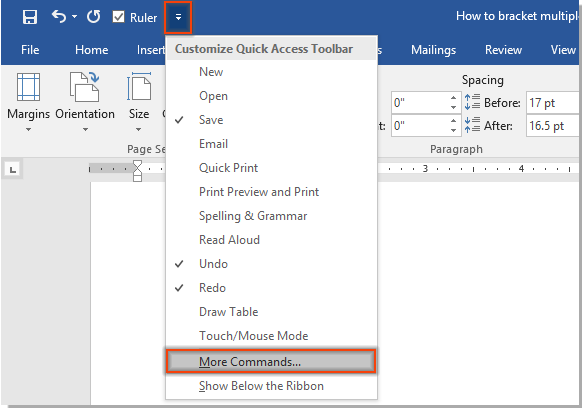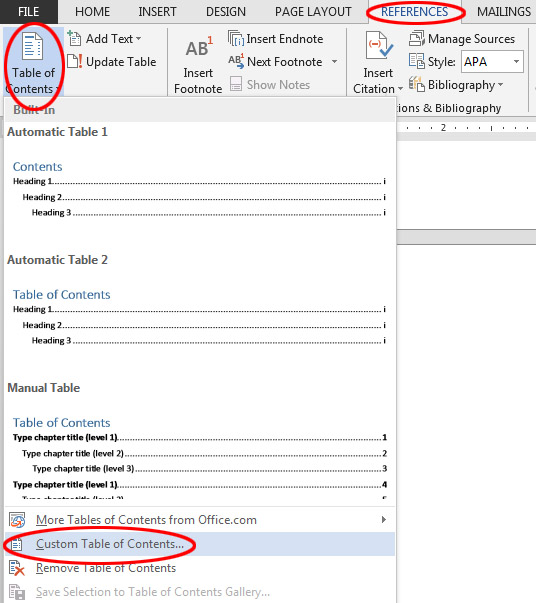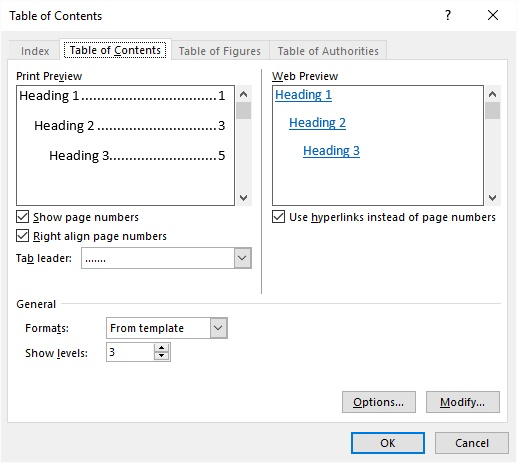

However, this idea is a bad one because any changes you makeĪre lost the next time you regenerate the table of contents.

Show Levels: Use this control to specify which heading levels to include in the table.Formats: Use this drop-down list to select one of several predefined formats for the table of contents.That connects each TOC entry to its page number. Tab Leader: Use this drop-down list to change or remove the dotted line.Numbers placed next to the corresponding text rather than at the right margin. Right Align Page Numbers: Deselect this check box if you want the page.Show the document's outline but not page numbers. Show Page Numbers: Deselect this check box if you want the TOC to.The Table of Contents dialog box lets you (among other things) select these options: This action summons the Table of Contents dialog box, from which you can manually choose the options for your table. Group of the References tab on the Ribbon and then choosing Insert Table ofĬontents. TOC by clicking the Table of Contents button in the Table of Contents If you don't like any predefined tables of contents, you can create a customized

This frame doesn't appear when you print the document. When you hover the cursor over the table. Shaded frame that's drawn around the table of contents is visible only Click the Table of Contents style you want to use.Open the References tab on the Ribbon and then click the Table of Contents button in the Table of Contents group.Ī menu that lists several Table of Contents styles is displayed.Press Ctrl+Enter to create a new page if necessary, and then click to position the insertion point on the empty page. The TOC generally appears on its own page near the beginning of a document. Move the insertion point to the place where you want the table of contents to appear.If you assign heading styles to your document's headings, creating a table ofĬontents is easy.


 0 kommentar(er)
0 kommentar(er)
